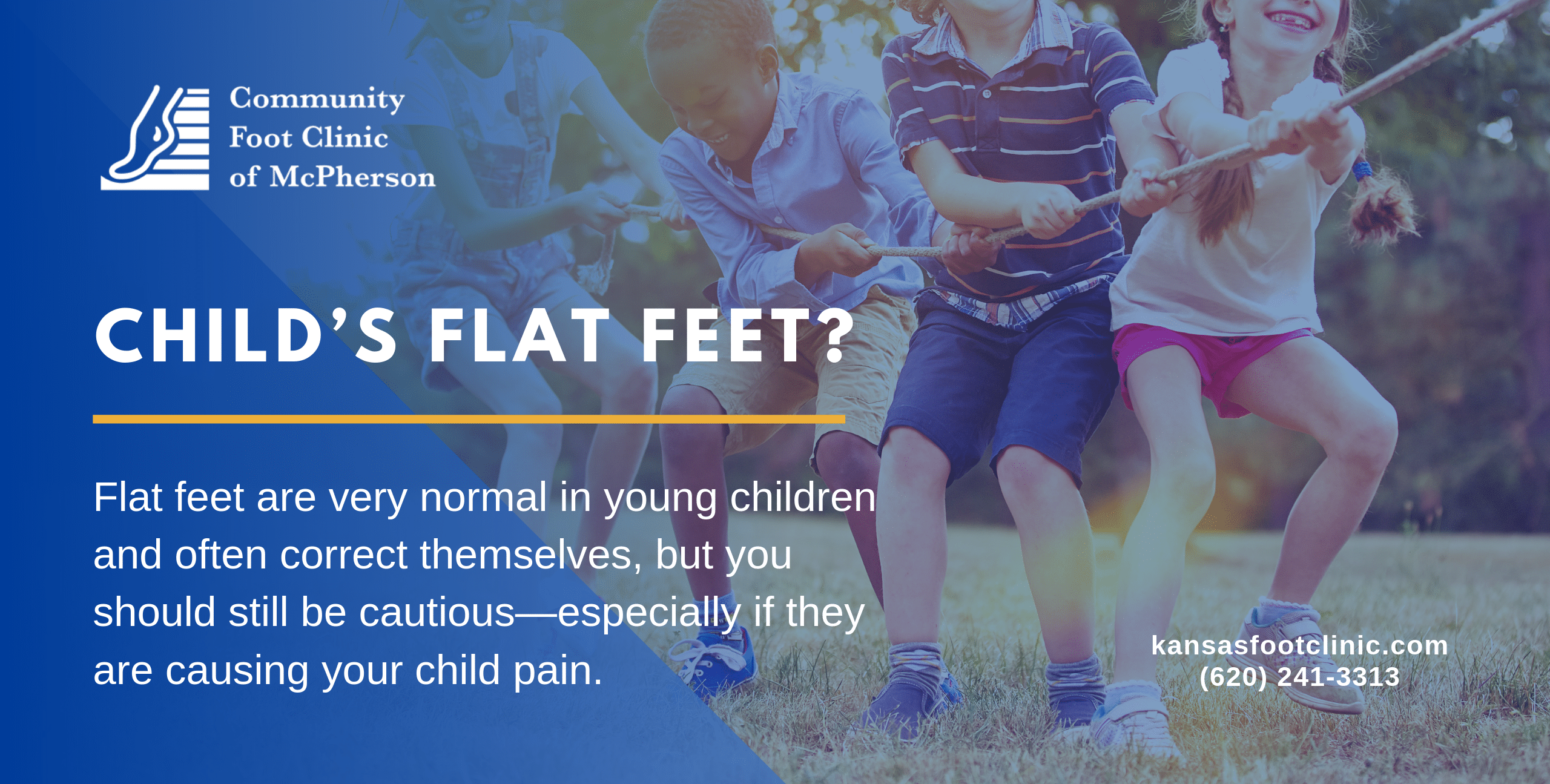Should You Be Worried About Your Child’s Flat Feet?
It’s pretty normal for new parents to obsess about every aspect of their child’s health and development. We love our children with all our hearts and only want what’s best for them as they grow.
So it can be disconcerting for parents to watch their little one start to stand, cruise, and walk—and notice that the soles of their feet are sitting completely flat on the ground!
Fortunately, we have some good news—with a caveat:
The good news is that flat feet are fairly common among young children and often goes away on its own. However, because there’s still a risk that a more serious or permanent condition is present—one that could affect how your child develops—it’s still a wise choice to bring your child to see us for an evaluation.
So the short answer is that, while you shouldn’t be worried, you also shouldn’t ignore them, but be smart and proactive.
Let’s investigate a bit.
The Slow Development of the Arch
The truth is it just takes time for most children to develop a rigid, permanent arch.
For one, the bones and joints of a young child remain extremely soft and flexible. In fact, bones don’t fully harden until well into the teenage years. And second, it takes a while for the muscles, ligaments, and tendons in the foot (responsible for holding the arch in place) to strengthen.
As a result, roughly half of kids up to about age six still have flat feet at least while standing and walking—the arch may reappear when walking on tiptoes, but flatten when the child bears weight.
For most kids, the arch doesn’t reach maximum height until age 9 or 10. And even without treatment, only about 10 to 20 percent will keep a permanent flat arch into adulthood.
However …
Here’s the “but.”
Although most cases of flat feet in children are fairly natural and will correct themselves in time, this is not always the case.
Sometimes there’s a much more troublesome cause operating behind the scenes, which will benefit from early detection and require specialized treatment. For example:
- Your child may have an unnaturally short or tight Achilles tendon, which not only causes the flat foot but limits the motion of the foot itself.
- There may be a rigid flatfoot caused by a fusion of bones at the hindfoot—for example, a tarsal coalition. Symptoms of this condition sometimes don’t appear until the child is a little older, when bones have matured more, but can include muscle spasms, limping, and significant pain.
- There may be a neurological cause, such as muscular dystrophy or cerebral palsy. Other conditions that might contribute include obesity or joint hypermobility.
Then again, it may simply be the case that your child’s arches just never form. And although some people experience no noticeable symptoms or difficulties related to their flat feet, they can cause problems that last into adulthood, including:
- Foot pain
- Limited foot mobility
- Inefficient gait biomechanics that lead to fatigue and increased risk of injury
- Misalignments throughout the standing skeletal system (knees, hips, etc.) and associated pain.
Does My Child Need Treatment?
Because flat feet are so complex, this question really can only be answered on a case-by-case basis.
For most very young kids—think under age 5—the answer is “probably not.” If your child is showing no signs of pain or discomfort, and making their developmental milestones, active treatment is probably not going to be necessary.
That doesn’t mean “forget about it,” though! You should still be observing your child’s feet and walking gait closely. Take them in for an initial evaluation, then watch carefully for signs of change—either improvement in arch shape, or signs of developing pain.
However, some more complicated or rigid forms of flatfoot usually do need treatment—and any flat feet that are causing pain or difficulty with walking and play should absolutely be addressed as early as possible. The longer you let a case of symptomatic flatfoot go untreated, the more difficult it will be to address—and the more likely it is that complications will persist into adulthood.
We will gently and compassionately provide whatever diagnostic testing is required—including a physical examination, and conversation with the child and parent about symptoms. We may need to take an X-ray, or watch your child walk or run, to get a clearer picture of how flat feet are affecting them.
Depending on the underlying cause of your child’s flat feet—and the associated symptoms—a wide variety of treatment options may be considered. Common approaches may include:
- New shoes that fit better and do a superior job of supporting the arch and cushioning the foot.
- Arch supports or orthotics.
- Stretching exercises—for example, to lengthen a tight Achilles tendon.
- Weight loss, if obesity is a contributing factor.
- Surgery, if other options are insufficient.
But again, we want to stress that flat feet are still very normal and don’t always cause symptoms—especially if your child is under age 5.
So don’t panic! Just give our office a call. We’ll be happy to take a closer look at your child and help put your mind at ease, as well as deliver whatever care (if any) is necessary. You can schedule an appointment by dialing (620) 241-3313, or simply fill out our request form online to have one of our staff members reach out to you.
McPherson Office
316 W. 4th Street
McPherson, KS 67460
P: (620) 241-3313
F: (620) 241-6967
© Community Foot Clinic of McPherson. All Rights Reserved.
Privacy Policy | Terms & Conditions
Web Design by CP Solutions
Marketed by VMD Services

